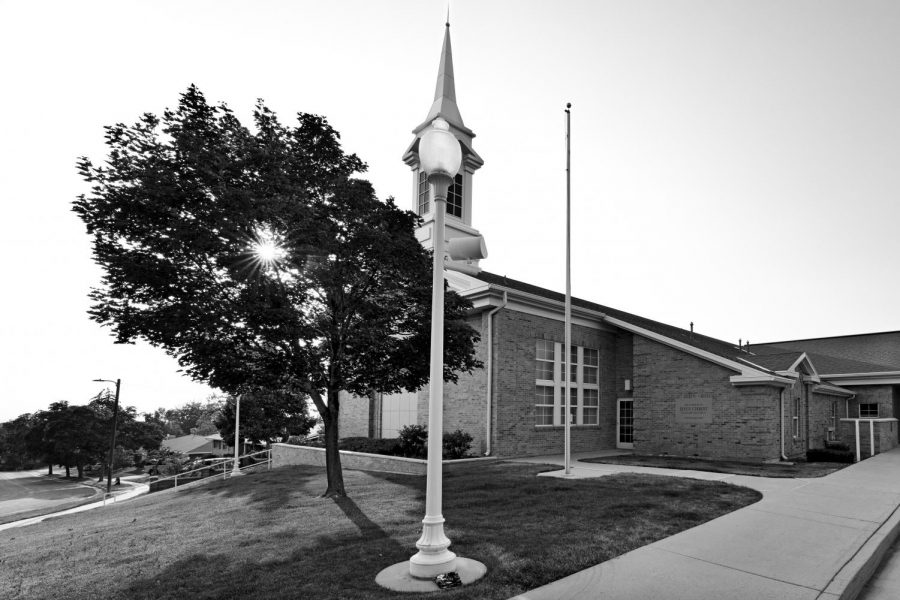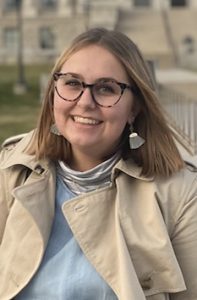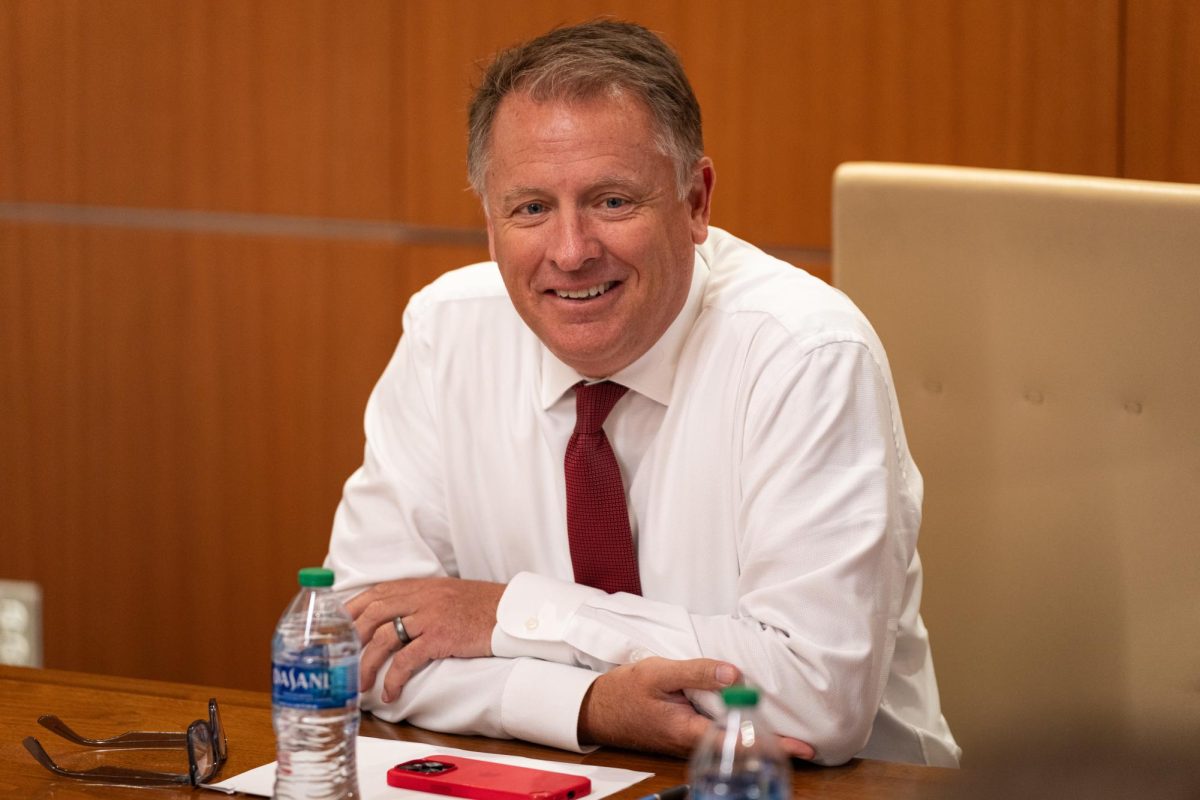Kincart: Changes to the LDS Church Are Good — But Are They Enough?
Local Mormon church near Foothill Drive on Sunday, July 11, 2021. (Photo by Kevin Cody | The Daily Utah Chronicle)
July 15, 2021
The Church of Jesus Christ of Latter-day Saints has made many important changes this summer. On June 7, the church announced the discontinuation of its general conference Saturday evening sessions. The following week, on June 14, the church publicized efforts to give millions of dollars to the UNCF and NAACP.
These changes indicate demographic shifts amongst church members and appeal to keeping their membership. These changes, while positive, should serve as only the beginning of something better. The church still has more progress to make.
Beginning October 2021, the church will stop holding evening sessions at its general conferences, semi-annual gathering featuring church leaders. Previously, the conference broke up these sessions into the women’s session and priesthood session. The church stated that “This change is being made because all sessions of general conference are now available to anyone who desires to watch or listen.”
Personally, I am excited about this change as I felt excluded from the talks shared in the priesthood session. As women cannot enter the priesthood, this could potentially eliminate a concern related to this disparity.
Nonetheless, I’m wary of the removal of the women’s session because I would be guaranteed to hear from female speakers there. In the October 2018 general sessions of conference, women spoke for only 77% of the length of time that men did. Even more troubling, women headed only 12.1% of the entire conference’s talks. The elimination of a session with mostly female speakers might reduce these already small numbers.
With this change, I hope the church will emphasize talks given by the women of its community because they can thrive in church leadership. I always resonate more with female speakers since they can speak to the experiences of women in the church. Female speakers have significantly helped me and many others find their place within the church.
The LDS Church took another positive step towards equality when they donated $3 million in scholarships for Black students and $6 million in humanitarian aid for inner cities. They also created a fellowship that will send up to 50 students to Ghana, where they will learn about Black American and African history. The fellowship will play a huge part in advancing the NAACP’s goal of policy change advocation. NAACP President Derrick Johnson said “We need to have young people in the policy pipeline. Scholarship is crucial to that.”
This monetary commitment furthers the three-year relationship between the NAACP and LDS Church. Members of the church pay tithing, a donation of 10% of one’s income to the church. Knowing that tithing money goes towards the NAACP partnership eases some of my concerns about the church.
This donation doesn’t erase the history of racism in the church but demonstrates a want of real change within the community. The NAACP partnership shouldn’t be taken for granted because even more positive actions can come from it.
These changes result from an ever-changing church with an ever-changing membership base. A recent national study by Nationscape points out that 23% of LDS Gen Zers identify as “lesbian, gay, bisexual or other.” Interestingly enough, these numbers within LDS Gen Zers align similarly to those of non-Mormon Gen Zers. This finding also nearly doubles the amount of gay, bisexual and lesbian LDS millennials found in the 2016 Next Mormon Survey.
With such significant demographic shifts found in the Nationscape and Next Mormon Survey, annual LDS membership growth has unsurprisingly stagnated to less than 1%. It appears that the church sends surveys to its members to understand the causes of this stagnation.
Some surveys ask about members’ identification as feminists and their thoughts on church history, doctrine and practices. Similarly, another survey asked questions ranging from perceptions of Young Single Adult wards to judgment by other ward members. These surveys demonstrate an actual interest in the thoughts of their membership base.
More importantly, these surveys don’t assume that the church doesn’t have flaws, thus indirectly admitting the necessity of these changes. The church needs to appeal to young people as their demographics and beliefs differ from those of previous generations. But these appeals could go the extra mile with changes that make the church less homophobic and transphobic. The two announcements made this summer are important, but there’s more to do.
As the LDS church’s demographics change, its policies will also continue to change. But I can only hope that these changes are motivated by the goodness of leaders’ hearts and not solely sustainability. The church needs to make more changes to address racial tensions, sexism, homophobia, transphobia and ableism in the church. Past church actions show that change always lingers around the corner — but for now, we must continue to wait.














Dennis A. Fletcher • Sep 26, 2021 at 2:02 am
As a retired management consultant and current reporter for a small-town news agency, I have watched many organizations go through the pangs of significant change. The larger the organization, the more resounding the pangs.
Given the size and breadth of the the Church of Jesus Christ of the Latter-day Saints (they no longer call themselves the Mormon Church and we should respect that), any major changes will not occur without considerable effort and some trip and falls along the way.
As a former member of the NAACP and SCLC, I am encouraged by the direction the church is taking and prey that their efforts at change to reflect the needs of a changing population are met with continuing success.
Dennis A. Fletcher
Reporter
Hemet Eye News
Hemet, California
http://www.HemetEyeNews.com
Alison • Aug 1, 2021 at 12:56 pm
They also need to change the way they treat the LGBTQ+ community. I haven’t gone to that church for many years because of the abuse I have seen and endured while attending. I do remember being in seminary once and a friend of mine was next to me. She was a lesbian and dressed like a boy. Sweetest girl ever ! But I will never forget when they made her leave because she was “inappropriately” dressed. They told her “you’re a girl, you need to dress like a girl.” And another, I was 17 about to be 18. I got pregnant at 17 and I got called in to talk to the bishop. He told me “well it’s too late for an abortion, you should consider adoption” he told me that I couldn’t raise a child and told me that I needed to repent for my sin of premarital intercourse. Well, my son is happier than ever and living his best life with me and I refuse to let him endure what I had to deal with inside that religious cult. So I spent many years as a basic Christian and my mother was still attending the Mormon church and would have the elders stop by and what not. I have read the Bible front to back twice over and decided to ask one of the Elders about speaking in tongues, I had just read about it and wanted to know what they thought…. One specifically made it a point to argue with me saying “that’s fake, it’s not real” yada yada. How are you going to say something written in the Bible wasn’t real when you are taught to teach it and the Book of Mormon? And the SAME elder proceeded to go into my fridge and dump and ENTIRE gallon of sweet tea I had just bought that day, without permission, he just did it. I can on with stories I have from dealing with those people. They have a LONG ways to go and throwing money out to people and corporations is not going to change how they really act. Now that I have been out of the church for 8+ years, I have been so happy and have been able to fully see how corrupt they really were. I’m grateful my children will never know that evil. They will grow with open minds choosing their own paths. I have many years to come to terms with Christianity and it all together wasn’t a good place to be. My son believes in God and I do not. But I will never judge them for their beliefs the way a Mormon member does when I explain why I don’t want the bishops, relief society, elders knocking on my door. But they still come with their judgment anyways. Now I’m in the process of QuitMormon.com since that seems to be the only effective way to cut ties with the religious cult.